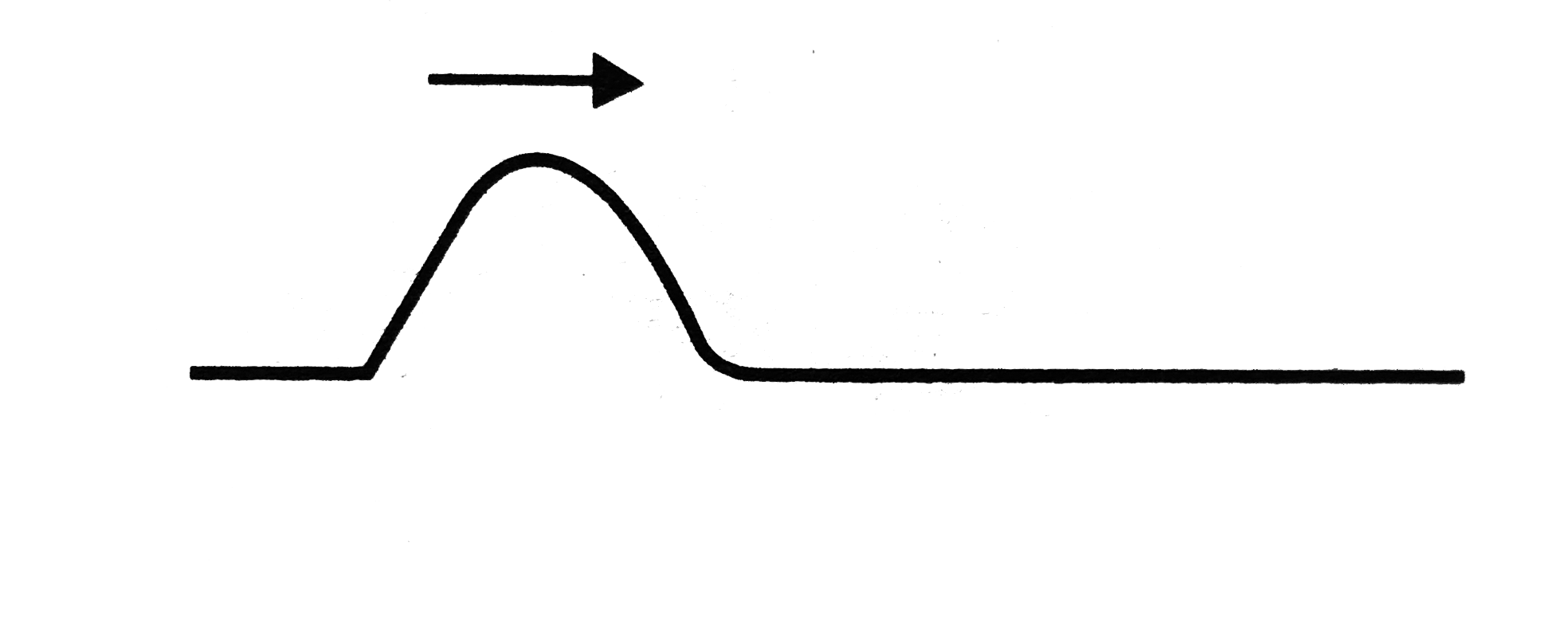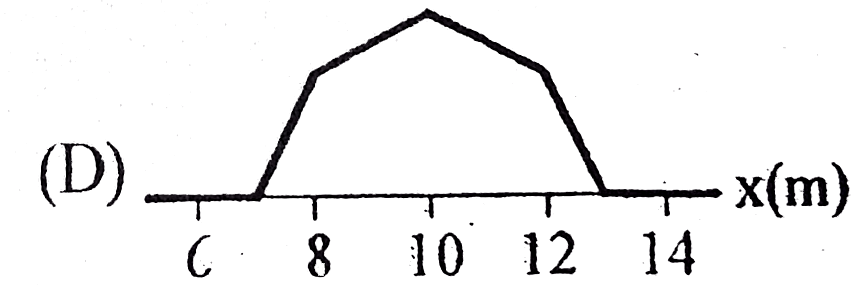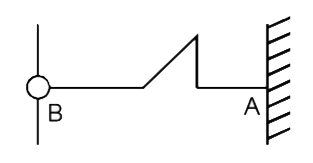The pulse shown in Fig. has a speed of 5cm/s. If the linear mass of the right string is 0.5 that of the left string , find the ratio of height of the transmitted pulse to that of incident pulse.

2√2(1+√2)
2√2(2+√2)
(2+√2)2√2
(1+√2)2√2
The correct Answer is:A
Since v=√T/μ,T2=T1
μ2=1/2μ1,v2=√2v1
At=(2v2v1+v2)Ai
AtAi=2√2v1v1+√2v1
=2√2(1+√2) 
Topper's Solved these Questions
- BOOK - CENGAGE PHYSICSCHAPTER - SUPERPOSITION AND STANDING WAVESEXERCISE - Single Correct144videos
SUPERPOSITION AND STANDING WAVES
- BOOK - CENGAGE PHYSICSCHAPTER - SUPERPOSITION AND STANDING WAVESEXERCISE - Multiple26videos
SUPERPOSITION AND STANDING WAVES
- BOOK - CENGAGE PHYSICSCHAPTER - SUPERPOSITION AND STANDING WAVESEXERCISE - Exercise 7.232videos
SUPERPOSITION AND STANDING WAVES
- BOOK - CENGAGE PHYSICSCHAPTER - SOUND WAVES AND DOPPLER EFFECTEXERCISE - Integer16videos
SOUND WAVES AND DOPPLER EFFECT
- BOOK - CENGAGE PHYSICSCHAPTER - THERMODYNAMICSEXERCISE - 241videos
THERMODYNAMICS
Similar Questions
The pulse shown in figure has a speed of 10cm/s .

(a) If the linear mass density of the right string is 0.25 that of the left string, at what speed does the transmitted pulse travel?
(b) Compare the heights of the transmitted pulse and the reflected pulse to that of the incident pulse.View SolutionA long wire PQR is made by joining two wires PQ and QR of equal radii PQ has length 4.8m and mass 0.06kg. QR has length 2.56m and mass 0.2kg. The wire PQR is under a tension of 80N. A sinusoidal wave-pulse of amplitude 3.5cm is sent along the wire PQ from end P. No power is dissipated during the propagation of the wave-pulse. caculate,
(a) the time taken by the wave-pulse to reach the other end R of the wire, and
(b) the amplitude of the reflected and transmitted wave-pulse after the incident wave-pulse crosses the jjoint Q.View Solution
Knowledge Check
- Question 1 - Select One
The pulse shown in Fig. has a speed of 5cm/s. If the linear mass of the right string is 0.5 that of the left string , find the ratio of height of the transmitted pulse to that of incident pulse.
 A2√2(1+√2)B2√2(2+√2)C(2+√2)2√2D(1+√2)2√2
A2√2(1+√2)B2√2(2+√2)C(2+√2)2√2D(1+√2)2√2 - Question 2 - Select One
A 5.5 m length of string has a mass of 0.035 kg. If the tension in the string is 77 N the speed of a wave on the string is
A110ms−1B165ms−1C77ms−1D102ms−1 - Question 3 - Select One
Two pulses on a string approach each other at speeds of 1m/s what is the shape of the string at t=6s?
 A
A B
B C
C D
D
A long wire PQR is made by joining two wires PQandQR of equal radii . Pq has length 4.8mandmass0.06kg. QR has a length 2.56m and mass 0.2kg. The wire PQR is under a tension of 80N . A sinusoidal wave pulse of amplitude 3.5cm is sent along the wire PQ from the end? No power is dissipated during the propagation of the wave - pulse . Calculate
(a) The time taken by the wave pulse to reach the order end R of the wire , and
(b) The amplitude of the reflected and transmitted wave pulses after the incident wave pulse crosses the joint Q.View SolutionA pulse shown here is reflected from the rigid wall A and then from free end B. The shape of the string after these 2 Reflection will be.
 View Solution
View SolutionA 5.5 m length of string has a mass of 0.035 kg. If the rension in the string is 77 N the speed of a wave on the string is
View SolutionA 5.5 m length of string has a mass of 0.035 kg. If the tension in the string is 77 N the speed of a wave on the string is
View SolutionA pulse is started at a time t=0 along the +xdirection on a long, taut string. The shape of the pulse at t=0 is given by function f(x) with
here f and x are in centimeters. The linear mass density of the string is 50g/m and it is under a tension of 5N.
There shape of the string is drawn at t=0 and the area of the pulse enclosed by the string the x-axis is measured. it will be equjal toView Solution

